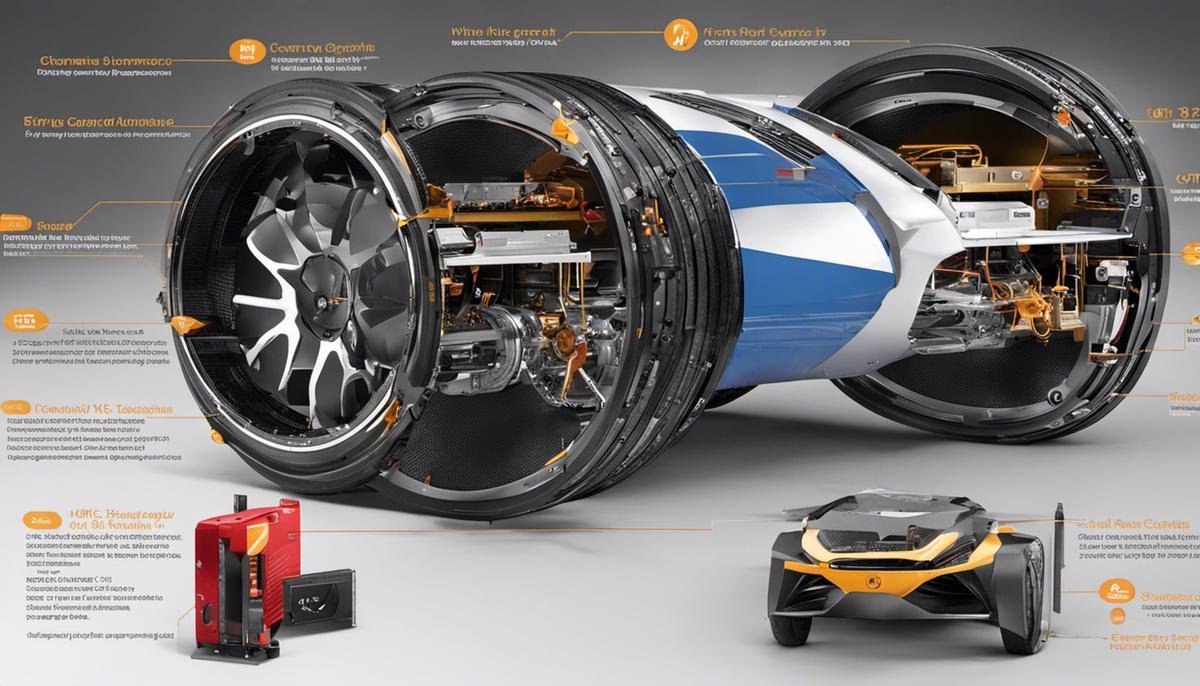Designed with profound artificial intelligence capabilities, the Generative Pretrained Transformer 3 (GPT-3) has revolutionized the field of text generation and machine learning. The magnitude of its capabilities reaches far and wide, owing to its innate features that have made enormous strides in translating machine interactions into a more human-like language. This technological marvel hails from OpenAI and encapsulates the power of machine learning, automated text generation, natural language processing and more. Both personal and business domains are witnessing its impactful applications, providing notable advancements in their respective fields. Whether you aspire to get started with GPT-3, or wish to streamline its text production, this comprehensive guide is designed to cater to your needs, while underpinning the importance of safety and ethical use in AI operations.
Understanding GPT-3 and its Advanced Features
Understanding GPT-3: Origins and Capabilities
GPT-3, which stands for generative pretrained transformer 3, is an artificial intelligence model developed by OpenAI. As the third iteration of the generative pretrained transformer models, GPT-3 represents a significant step forward in AI technology. It utilizes machine learning to understand and generate human-like text based on input.
Advanced Text Generation: How Does GPT-3 Autogenerate Text?
At its core, GPT-3 operates on the principle of predictive text generation. The AI accepts a seed text and predicts what will follow it. This sequences prediction is possible due to the model’s large-scale machine learning where it was trained on diverse internet text. However, while text generation is its primary functionality, it can also answer questions, perform translations, and write essays given appropriate instruction.
Machine Learning and Natural Language Processing: GPT-3’s Backbone
GPT-3 owes its advanced capabilities to the incorporation of machine learning and natural language processing. It has been trained on a vast amount of data, allowing it to learn patterns and mimic the style, tone, and format of different types of text. Natural language processing enables GPT-3 to understand and generate human-like text accurately.
Advanced GPT-3 Features: An Overview
One advanced feature of GPT-3 is its wide-ranging compatibility. Since it operates through an API, it can be integrated into various applications or platforms. GPT-3 also offers different levels of output control such as temperature and max tokens. Temperature influences the randomness of the output where a higher value will produce a more random output. Similarly, the max token parameter sets the maximum length for the generated output.
GPT-3 in Daily Life: Personal and Professional Use Cases
The applications of GPT-3 span far beyond basic text generation. It’s being leveraged in chatbot technology, translation services, and personal assistant software, as well as more creative roles in content creation, like drafting emails or writing articles. Businesses also use it in customer service automation, market analysis, and data interpretation, proving its adaptability and relevance in various sectors.
Demystifying Advanced Operations with AutoGPT
To elevate your GPT-3 user experience, it is advisable to explicitly specify your desired output format and provide detailed instructions. If the results aren’t matching your expectations, try tweaking settings such as temperature and max tokens in accordance with your use case needs. Additionally, keep in mind that monitoring the AI’s output and implementing moderation tools can greatly assist in mitigating the spread of inappropriate data. Regular updates to the model’s training resources is another effective strategy to maintain its pertinence and accuracy.

Setting up Advanced GPT-3
Preparation for GPT-3: Installing Essential Software Packages
Before you embark on this GPT-3 journey, you need to ensure your machine is equipped with the necessary software packages. This includes having Python 3.7 or a later version, and the Python package installer, pip. To initiate the installation of the OpenAI GPT-3, simply type the command pip install openai into your terminal. Keep in mind, it is crucial to update your pip to its most recent version for an optimal installation process. Use the command pip install –upgrade pip to update accordingly before proceeding with the OpenAI installation.
Dealing with API Keys
Upon successful installation, you need an API key to interact with GPT-3. You can acquire an API key by creating an account at OpenAI’s website and following the instructions on the API section. The key is a unique identifier that enables you to access the GPT-3 service. Remember to safely store your key because if lost, you’ll need a new one.
Once obtained, you can use the key from your environment by exporting it if you’re on Unix/Linux(export OPENAI_API_KEY=’your-key-here’) or setting it if you’re on Windows(set OPENAI_API_KEY=your-key-here). You can then use the key in your Python code like this: openai.api_key = os.getenv(“OPENAI_API_KEY”).
Managing Your First Run
Running GPT-3 for the first time can seem complicated, but a few simple steps can make it smooth. First, create a Python file, for example, script.py, and import the necessary modules by adding these lines of code:
import os
import openai
You can then generate a response from GPT-3 by adding a few more lines of code:
openai.api_key = os.getenv("OPENAI_API_KEY")
response = openai.Completion.create(
engine="text-davinci-002",
prompt="Translate the following English text to French: '{}'",
max_tokens=60
)
print(response.choices[0].text.strip())
This script instructs GPT-3 to translate an English text to French.
Streamlining GPT-3: Your Guide to Effective Setup and Configuration
Streamlining your GPT-3 setup involves an array of adjustments aimed at maximizing the model’s performance and output quality. Key configurations include tinkering with temperature and token limit values contextual to your individual use case. A higher temperature value fosters diversity in output, although it may increase randomness. Conversely, lower values yield more concentrated and uniform outcomes.
The token limit plays a crucial role in governing the length of the text generated. Larger token counts generate longer texts, and smaller counts produce shorter outputs. However, bear in mind that longer tokens necessitate extended processing times, thus impacting the model’s overall performance. To effectively optimize GPT-3, a judicious balance of these parameters is essential, tailored specially to your requirements.
To monitor your GPT-3 runs and examine them for optimization prospects, OpenAI offers a comprehensive log of your API usage, accessible through your account dashboard on their website. Regular perusal and analysis of this log can reveal operational patterns and needful adjustments that ensure optimum utilization of the GPT-3.
In terms of data security, it is imperative to store sensitive information securely and refrain from sharing personally identifiable information with the API. This safeguards users’ privacy and aligns with the ethical use policy advocated by OpenAI.

Optimizing Text Production with GPT-3
Mastering Advanced Autogpt Training
Capitalizing on GPT-3’s potent text creation capabilities entails proper training of the model. GPT-3 garners insights from a vast array of internet text, but it doesn’t acknowledge specific documents or data sources used for its training. Importantly, it lacks access to personal information unless explicitly provided in the training data. To receive high-quality output, it’s advised to craft detailed and explicit prompts when interacting with the model. For example, specify the desired answer format or instruct the model to assess each step, weigh the pros and cons, and subsequently settle on an answer.
Understanding and Overcoming Common Errors
Advanced Autogpt, like any model, isn’t perfect and can produce incorrect or nonsensical responses. It can also make mistakes when understanding and generating languages or when dealing with world facts. Autogpt can be overly verbose and tends to overuse certain phrases. It can also be sensitive to input phrasing and may provide different responses to rephrased questions. To overcome these, adjust the ‘temperature’ setting. A lower temperature like 0.2 makes the output more focused and deterministic, while a higher temperature such as 0.8 gives a more random output.
Managing Language Styles
Adjusting the output of GPT-3 to match the desired language style, tone, or other factors involves customizing several elements. In terms of ‘max tokens’, be aware that if it’s set too low, GPT-3 may not provide a full response. A too-high number might get more than is needed. It’s also possible to guide GPT-3’s responses by system message, using user messages as well as the prompt.
Addressing Sensitivity and Bias
One common concern with language models is the risk of them generating biased or offensive outputs. GPT-3 might respond inappropriately or exhibit biased behavior if not properly managed. It is useful to apply a moderation layer to the outputs of the Chat models. OpenAI provides a moderation guide that developers can use with recommendations to prevent content that violates OpenAI’s use-case policy from being shown.
Expanding Knowledge and Creativity
GPT-3 can generate creative content such as poetry, storytelling, and even joke-telling. To maximize these capabilities, experiment with various prompt styles and structures. Asking directly for a joke or a poem, providing a set up and letting the model complete the punch line, or offering a start to a story and letting GPT-3 fill in the rest can enable the model to explore its creativity.
Performance Tuning
For effective performance tuning, it’s essential to understand the three major components: ‘temperature’, ‘max tokens’, and ‘frequency penalty’. Adjusting the temperature sets the randomness of the model’s output. Setting a higher frequency penalty discourages the model from using common words or phrases and encourages more unique responses. Setting the tokens right ensures the output isn’t cut short or excessively long.
Mastering key facets of GPT-3 can unleash its extensive applications – ranging from drafting emails, coding, content generation, tutoring in numerous disciplines, language translation to even imitating characters in video games. By gaining a sound understanding and effective control of these elements, the usage of this transformative technology stands limitless.

Safety and Ethical Use of GPT-3
The Bedrock of AI and Machine Learning
AI and Machine Learning belong to a family of technologies that enable computers to learn from raw data and make informed predictions or choices, all accomplished without the need for explicit programming. These technologies are broadly categorized into two main types: Supervised and Unsupervised learning. Supervised learning is where the machine learns from a dataset with predefined labels, while unsupervised learning involves the machine draw patterns from unlabeled data.
Digging deeper into the AI ecosystem, we encounter Advanced AutoGPT, or the Generative Pre-trained Transformer. This AI language model, a brainchild of OpenAI, has taken the industry by storm. Its latest development, GPT-3, is the apex of cutting-edge technology in AI and is recognized for its remarkable ability to generate text closely resembling human-like language, all it needs is an initial input or prompt.
Responsibilities When Using AI and Machine Learning
It’s essential to maintain safety and ethical considerations when using AI and machine learning tools. Never use these technologies to generate harmful, misleading, or inappropriate content. As you utilize a tool like Advanced AutoGPT, always consider the potential outcomes and the potential for misuse.
For instance, these technologies should not be used to create deep-fake videos or content that spreads false information. It’s also important to ensure the AI isn’t making decisions based on bias—whether conscious or unconscious—from the data it was trained on.
Dealing with GPT-3’s Limitations
As impressive as GPT-3 is, understanding its limitations is vital for responsible use. GPT-3 bases its outputs on patterns it has learned from data and does not comprehend information the same way a human would.
The AI doesn’t have an inherent understanding of right or wrong and may sometimes generate incorrect or biased content. Continually reviewing and assessing the AI outputs and intervening where necessary helps to overcome these limitations.
Mitigating Risks Associated with Data Security and Privacy
Data security and privacy are important considerations with the use of AI and machine learning tools. Be careful not to input sensitive data as it may be visible to others. Also, ensure you’re using a trusted platform for your AI tools that enforces stringent data security measures.
It is recommended to anonymize and encrypt data whenever possible, and only share data with trusted entities. Regularly reviewing and updating security measures can also help to mitigate risks.
Educate Yourself and Others
It’s important to educate yourself about the technological and ethical aspects of AI and machine learning, so you can use it responsibly. Additionally, educating others about the potentials and risks associated with these technologies, particularly GPT-3, can lead to more responsible use across the broader community.
Nurturing an Environment of Open Discussion and Continuous Learning
The responsible application and development of artificial intelligence (AI) are deeply tied to fostering an open dialogue about its prospective risks, restrictions, and ethical implications. It’s beneficial to participate in or even spearhead conversations on these significant matters within various public and industry-specific forums. It is important to understand that as AI and machine learning continue to advance, the discourse about it needs to keep pace too.
AI and machine learning are dynamic arenas that continuously evolve with new techniques and technologies. Thus, to truly understand, appreciate, and utilize these tools responsibly, you need to remain committed to persistent learning and remain updated on these constant advancements.

Exploring Advanced GPT-3 Applications
Exploring the Impactful Use of Advanced AutoGPT-3 Across Different Domains
AI systems, more specifically OpenAI’s GPT-3, have brought about a transformative change to the technology industry, credit to their exceptional capacity to grasp and generate text resembling human communication. Content generation has become a significant application area where GPT-3 is employed prolifically. Businesses harness its potentials for producing high-quality articles, blogs, and social media content. Another major area is language translation. Here, GPT-3 provides an impressive understanding of context, subtleties, and complexities in various languages. This facilitates a more comprehensive and effective approach than traditional phrase-based translation models.
Successful Implementation of Advanced AutoGPT-3
GPT-3 has been used to train chatbots that simulate human-like conversation, improving customer support and engagement. Companies like Microsoft use it in their Cortana digital assistant. In legal technology, it is used for contract review to capture subtle legal language differences. GPT-3 has also found use in dosing medical treatments, where it leverages vast amounts of data to make predictions about doses and treatment effects.
Potential Prospects for Innovation with Advanced AutoGPT-3
The potential for innovation with GPT-3 is vast. In education, it carries the potential to make personalized learning accessible to all, by tailoring tutoring programs to individual students’ needs. In journalism, it can generate drafts or short reports, allowing journalists to focus on in-depth reporting. GPT-3 might even be used to generate coding or scripting for developers, making their job less tedious and more focused on design and architecture.
Impacts of Advanced AutoGPT-3 on Various Industries
The influence of GPT-3 is already being felt across multiple industries. In healthcare, it can analyze medical literature, propose diagnoses, and suggest treatments, making healthcare more efficient. In e-commerce, it can generate personalised product descriptions and recommendations for each customer. For language services providers, it offers faster translations without compromising quality.
Advanced AutoGPT Tips and Tricks
When working with GPT-3, here are a few tips and tricks to enhance its performance. First, experiment with temperature parameters. Lower values (e.g., 0.2) make output focused and deterministic, while higher values (e.g., 0.8) create diverse and creative output. Second, make your instruction explicit. Specify the format you want the answer in or ask the model to think step by step or debate pros and cons before settling on an answer. Lastly, “prime” the model with context and information at the time of the task to improve its understanding and output.
Remember to consider ethical and misuse risk with each application of GPT-3. OpenAI has great misuse prevention mechanisms to ensure harmful or biased outputs are minimized. Always double-check AI-generated content for the risk of generating false or sensitive information.
Indeed, GPT-3 is not just an advanced tool but a game-changer that has the potential to redefine business models in various industries. Its real-world applications have so far been impressive, underscoring a future where AI becomes increasingly central in facilitating innovation. Getting acquainted with its advanced features, effective setup, and optimization are vital for leveraging its advantages. Equally important is the understanding of its limitations and the importance of adopting ethical and safe practices. As it continues to gain momentum, GPT-3 is poised to shape an exciting future that amplifies human potential and reshapes conventional mechanisms, setting a benchmark in the evolving landscape of artificial intelligence.




